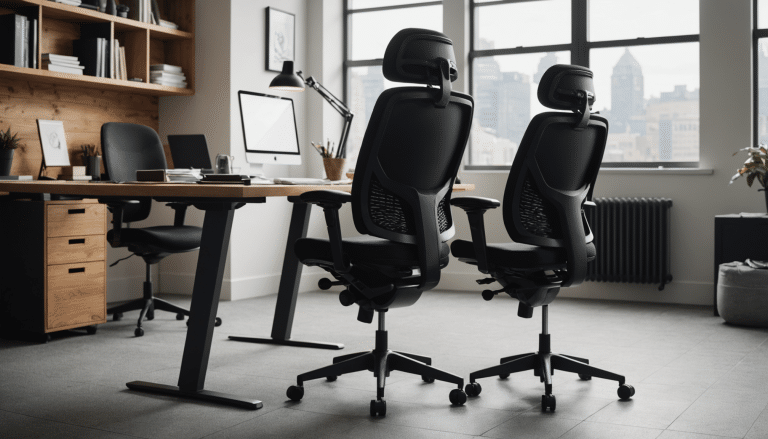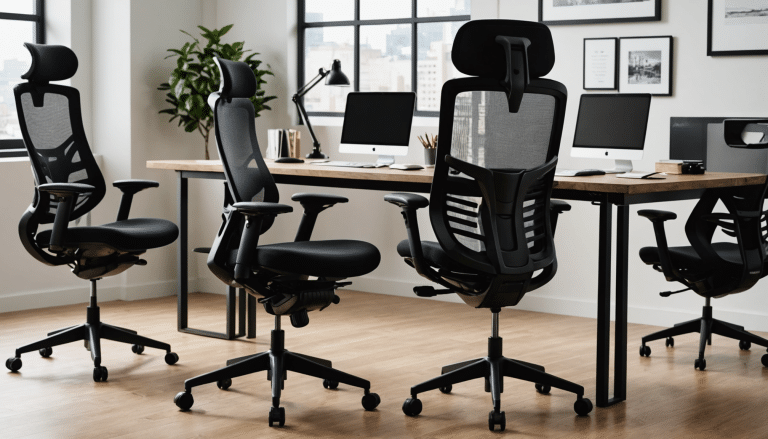Standing Desk Benefits
We all know how frustrating it can be sitting behind the same desk all day, every day. Our position in the office becomes our second home so much so that even a simple leg-stretching walk to the water cooler or coffee machine can feel like absolute bliss. Even if you’ve made your desk as comfortable as possible with a monitor stand, there’s no substitute for getting up and moving about. But just how bad for our health is sitting at a desk all day? And how often should you stand up at your desk?
At Viking, we understand the challenges that can be brought on by working in an office and sitting at a desk all day. That’s why we’ve put together this guide on how to use a standing desk and the standing desk benefits that could make a difference to your health.
Stand Up Desk Benefits
So, what is a standing desk and are standing desks better than sitting? There are numerous reasons that sitting for long periods of time can be bad for your health. The NHS states that excessive sitting can be linked to obesity, diabetes and other health problems. A standing desk has numerous benefits that’ll help get you on your feet and avoid potential health problems caused by sitting for hours on end.
Burn More Calories
Using a standing desk can help you negate the potential weight gain associated with sitting at a desk all day. Standing burns more calories than sitting, meaning that you’ll find it easier to stay in control of your weight if you’re stood for long periods of time during the day.
Feel More Energetic
We’ve all found ourselves slumped in our desk chair at some point in the day, feeling like we simply can’t go on working and need our bed. Standing at a desk will stop you from slouching back and help you feel naturally more energetic.
Become More Productive
Standing behind a desk engages some of the largest muscles in your body, naturally increasing blood flow to the brain. This can help us feel much better at work, increasing our productivity and concentration.
Lower the Risk of Health Problems
A study carried out by the British Journal of Sports Medicine found that those who sit the most are more than twice as likely to develop type 2 diabetes and cardiovascular disease. So, using a standing desk for part of your working day can help balance out the amount of time spent sitting.
It’s not guaranteed that using a standing desk will immediately make you feel all these benefits, but the science certainly supports the fact that those who sit for long periods are more likely to suffer negative consequences on their health.
Is a Standing Desk Better for Your Back?
For those suffering from chronic back pain, a standing desk is often one of the solutions people look towards. But is a standing desk really better for your back? According to a study by the Centers for Disease Control and Prevention in the U.S., standing desks reduced upper back and neck pain by 54%.
Back pain can be caused by sitting for long periods of time with poor posture. This can be caused by the cumulative stresses and pressures on the back muscles from sitting with the spine in a “C” position all day, leading to pain. The spine is meant to be kept in a consistent “S” position, something that standing will achieve.
If you do have back pain problems, it’s always best to follow the advice of a health professional and take their recommended steps to alleviate pain.
Are Standing Desks Better?
The answer to the question ‘are standing desks better?’ is not a straightforward yes or no. It’s all down to preference. Some office workers prefer to spend portions of their day standing at a desk, whereas others may find that it doesn’t help them at all. The best solution would be to try a standing desk for yourself. Alternatively, you could also try a stand-sit desk that can switch between the two.
If you’re concerned about spending long periods of time sitting at work. It might also be worth considering going for walks or to the gym on a lunch break, helping to break up the day. This can also be a great way to keep a clear head at work. You should also ensure that you’re taking regular breaks to get up from your desk, taking your eyes off the screen and stretching your legs.
How to Sit at a Desk
If you do find yourself having problems sitting at your desk, you might also want to consider checking that it meets HSE regulations. Your employer is required to provide a workstation assessment, but here are a few tips to help you out when setting up your workstation.
- Arms should be parallel to the desk when using the keyboard
- You should prevent overreaching when using the mouse, allowing your hand to be relaxed
- Text size on screens should be comfortable to read and there should be no flicker on the screen at all
- Your eyes should be level with the top of your monitor, allowing you to keep a straight neck and ‘S’ shaped spine
- The small of your back should be supported by the chair’s backrest, with your feet flat on the floor
These are just a few simple guidelines to help you make your workspace as comfortable as possible and help you sit at your desk without causing injury. Having a full HSE assessment is part of the law for your employer and will help ensure your desk is set up correctly.
Standing desks are becoming increasingly popular as an option to avoid too many lengthy spells of sitting. If you’re looking to improve your comfort at your workstation, you may also want to consider using a monitor riser or stand.












